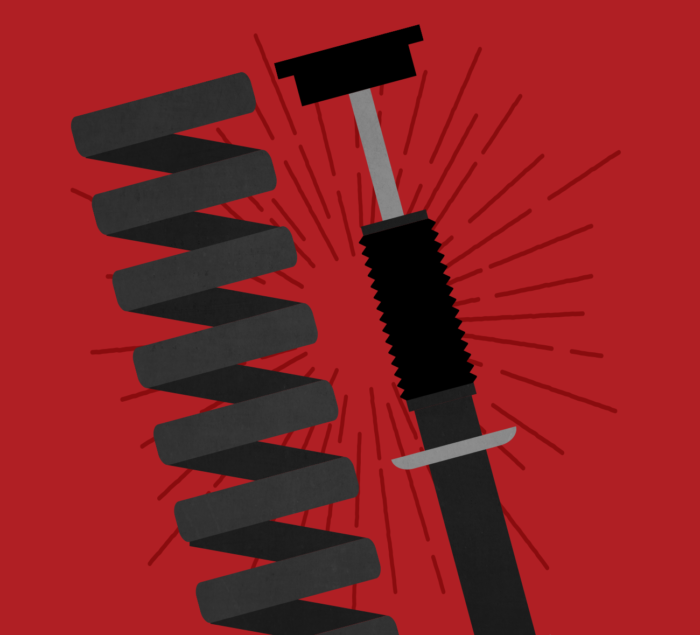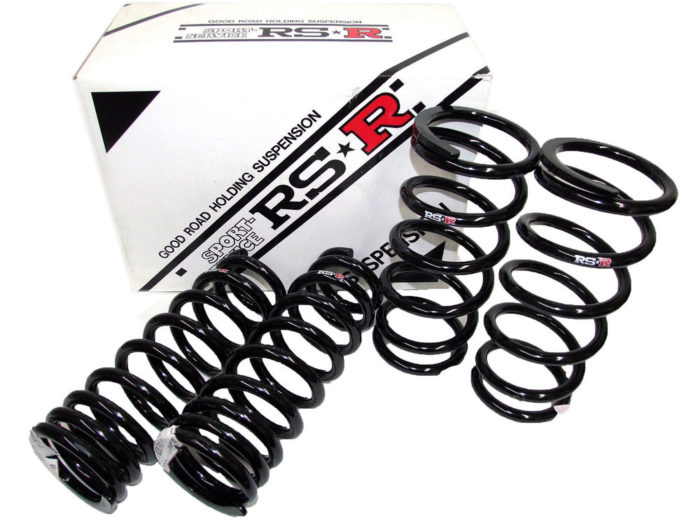
Lowering your vehicle is one of the most noticeable modifications both in visual impact and driving dynamics. We get quite a few inquiries about suspension setups and are often asked about the best practices to lowering a customer’s car. We are here to give you a brief “101” overview to lowering your vehicle with springs and also complimenting them with shocks.
Best Suspension 101: Lowering Springs Shocks
Lowering your vehicle has several benefits:
- Roll Center Reduction – The reduction in distance between the chassis and the ground reduces the roll center of the vehicle. This benefits the car in the weight transfer from one side of the vehicle to the other in a turn. Less weight transfer means more evenly-distributed pressure on all 4 tires which means better traction.
- Spring Rate – In combination with the lower center of gravity, the increased spring rate of a lowering spring, which helps compensate for the shorter shock travel, improves handling by reducing body roll.
- Aerodynamics – Lowering your vehicle improves the aerodynamics by reducing the amount of air passing under the vehicle. Reducing drag not only aids in performance but also improves fuel economy.
- Style – Visual impact is typically the main reason people lower their vehicle. There is no denying that a lowered vehicle looks more stylish and sporty.
Springs have been the go-to method for lowering vehicles. The design of a good lowering spring takes into consideration things like factory spring rate, factory shock dampening, vehicle weight, and suspension geometry. Companies like RS-R and Eibach factor in all these variables to create a spring that offers good ride quality, improved handling, and does not compromise the factory shock absorbers. You can expect a slightly stiffer ride after installing lowering springs. Most enthusiasts welcome the increased road feel and the average consumer can’t tell much of a difference in comfort. With springs being fairly inexpensive and straight-forward to install, most enthusiasts choose them for lowering their vehicle over the more expensive coilover systems.

When selecting a spring there are typically a couple of options: Spring type (Progressive vs Linear) and Lowering Amount (I.E. 1 inch vs 2 inch). Selecting the amount you want to lower your vehicle comes down to preference and also how much ground clearance you feel is adequate for where you drive. For selecting spring type, it is important to know the differences between Progressive and Linear springs.
- Progressive springs are pretty much what they sound like. The spring rate progressively changes as it is compressed. The advantage of this design is being able to keep a close to factory spring rate in a given operation range (say the range you would typically be in during daily driving) which retains factory ride quality. The range past this in which the spring would be compressed at a faster rate, such as aggressive turns and impacts (bumps and potholes), a mildly higher spring rate improves performance and also keeps the suspension from compressing too much (which could result in bottoming out or moving out of the operation range). Lowering springs typically utilize this design because of the versatility.
- Linear springs are also what they sound like. The spring rate is constant along the entire spring. Linear rate springs are used when a specific shock absorber is designed and tuned to go with them. They offer a more consistent feel under compression (like what you would feel in racing and aggressive driving). When used for lowering a vehicle you sacrifice ride comfort. Because you are running a much higher spring rate, you don’t have the same comfort range like you do on a progressive spring. For most enthusiasts, the benefits do not generally outweigh the decrease in ride comfort so they are less commonly used by manufacturers.
Shock absorbers paired with lowering springs are also a common upgrade. While properly engineered lowering springs are matched to the factory shock absorbers, there are still performance benefits from a more aggressively-valved shock absorber or by simply replacing the old factory units with newer ones. Most shock absorbers last between 40k-80k miles depending on vehicle weight, driving habits, and road conditions. If you are in that area we definitely suggest looking at upgrading or replacing your shocks while you are installing lowering springs.

If you are still not sure what route you want to go to lower your vehicle, we would be happy to help you in any way we can. Please feel free to contact us for questions or further advice on all your modifying needs.
Check out our website for our great deals!